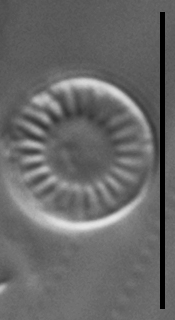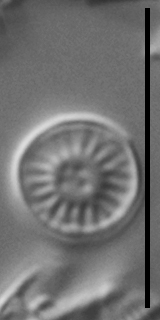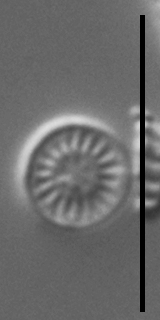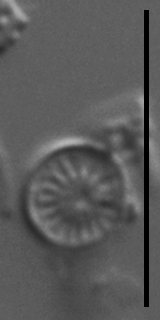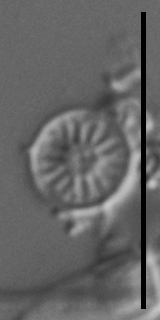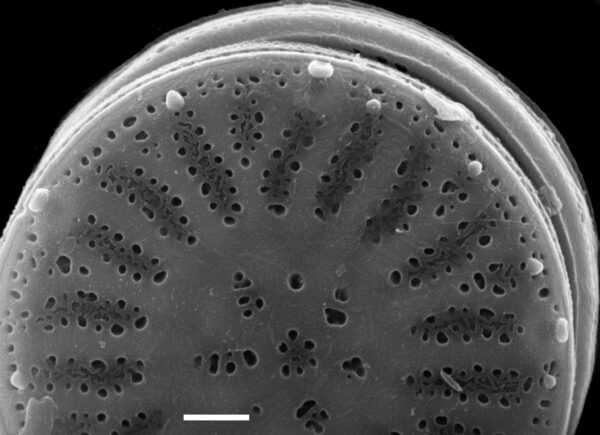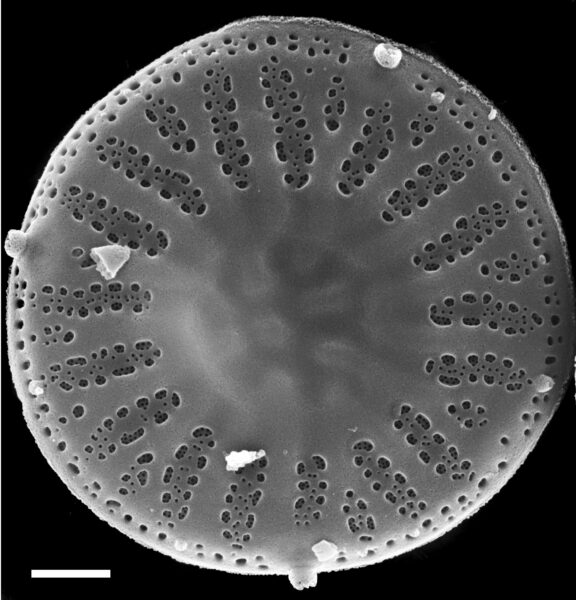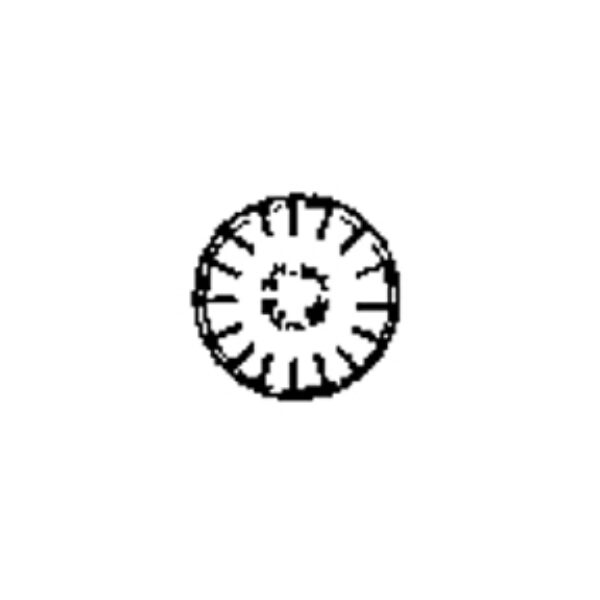Discostella lakuskarluki
-
Category
-
Diameter2.6-6.9 µm
-
Striae in 10 µm13-19
-
SynonymsCyclotella lakuskarluki Manguin ex Kociolek and Reviers
-
Reported AsDiscostella tatrica (Procházková et al. 2012)
Discostella nipponica (Tuji and Williams 2006)
-
ContributorMarina Potapova - Jun 2020
-
ReviewerSarah Spaulding - Jun 2020
Identification
Description
Cells are solitary and disc-shaped. The striae on the valve face extend across approximately 50–70% of the valve radius. The central area of the valve is either convex or concave. A central rosette of striae may be present, consisting of ghost striae, or absent. If present, the central rosette consists of 1–8 radially elongated, or isodiametric alveoli, and one central alveolus. Ghost striae may be present on the valve with a concave center. Or, the central rosette or ghost striae may be absent, leaving a center valve with no markings.
The alveoli are separated by shallow costae. About half to one-third of all costae separating the alveoli bifurcate on the valve face. Each costa diverges into 2–3 branches near the valve margin, separating small mantle alveoli. Externally, the perimeter of alveoli is marked by relatively large rounded or oval pores, 50–100 nm long, with smaller pores in between. Internally, the alveoli are occluded by a silica plate with numerous pores, approximately 10–15 nm in diameter.
There are 3–5 marginal fultoportulae situated between the costae, each with two satellite pores. The external portions of the fultoportulae are short thickened tubes. The rimoportula is positioned between costae, at approximately the same distance from the valve margin as the fultoportulae. Short conical spines are present on the valve margin at the end of some valve face alveoli.
Autecology
While this taxon may be locally common in the plankton of arctic and boreal oligotrophic lakes, it is considered rare because of its narrow geographic distribution.
Our recent work (Potapova et al. 2020) leads us to believe that D. lacuskarluki may be widely distributed across low nutrient lakes of tundra, boreal, alpine, and subalpine regions of North America and Eurasia. This diatom may not often be recognized, however, because SEM observations are required for confirmation of the species.
Studies of lake sediment cores have been made in much of the region, but most paleolimnologists use an older reference (Krammer and Lange-Bertalot 1991). Based on that flora, small species of Discostella are typically identified as D. pseudostelligera or D. glomerata. Furthermore, without SEM or a keen eye, it may not be possible to separate small specimens of these taxa from D. lacuskarluki. Yet, the distinction may be crucial, as D. pseudostelligera is characteristic of eutrophic waterbodies (Stoermer and Yang 1969, Houk et al. 2010).
Paleolimnological surveys note that small Discostella species in lakes across the Northern Hemisphere are increasing in abundance (Rühland et al. 2010). This change is attributed to an increase in thermal stratification with increased summer temperatures. The centric species may be favored in the poorly mixed surface layers.
-
Size Range, µm3
-
Motility
-
Attachment
-
Habitat
-
Colony
-
Occurrence
-
Waterbody
- Learn more about this
Citations & Links
Citations
-
Publication Link: 10.1080/0269249X.2020.1727569
Cite This Page
Potapova, M. (2020). Discostella lakuskarluki. In Diatoms of North America. Retrieved July 26, 2024, from https://diatoms.org/species/discostella-lakuskarluki
Responses
The 15 response plots show an environmental variable (x axis) against the relative abundance (y axis) of Discostella lakuskarluki from all the stream reaches where it was present. Note that the relative abundance scale is the same on each plot. Explanation of each environmental variable and units are as follows:
ELEVATION = stream reach elevation (meters)
STRAHLER = distribution plot of the Strahler Stream Order
SLOPE = stream reach gradient (degrees)
W1_HALL = an index that is a measure of streamside (riparian) human activity that ranges from 0 - 10, with a value of 0 indicating of minimal disturbance to a value of 10 indicating severe disturbance.
PHSTVL = pH measured in a sealed syringe sample (pH units)
log_COND = log concentration of specific conductivity (µS/cm)
log_PTL = log concentration of total phosphorus (µg/L)
log_NO3 = log concentration of nitrate (µeq/L)
log_DOC = log concentration of dissolved organic carbon (mg/L)
log_SIO2 = log concentration of silicon (mg/L)
log_NA = log concentration of sodium (µeq/L)
log_HCO3 = log concentration of the bicarbonate ion (µeq/L)
EMBED = percent of the stream substrate that is embedded by sand and fine sediment
log_TURBIDITY = log of turbidity, a measure of cloudiness of water, in nephelometric turbidity units (NTU).
DISTOT = an index of total human disturbance in the watershed that ranges from 1 - 100, with a value of 0 indicating of minimal disturbance to a value of 100 indicating severe disturbance.
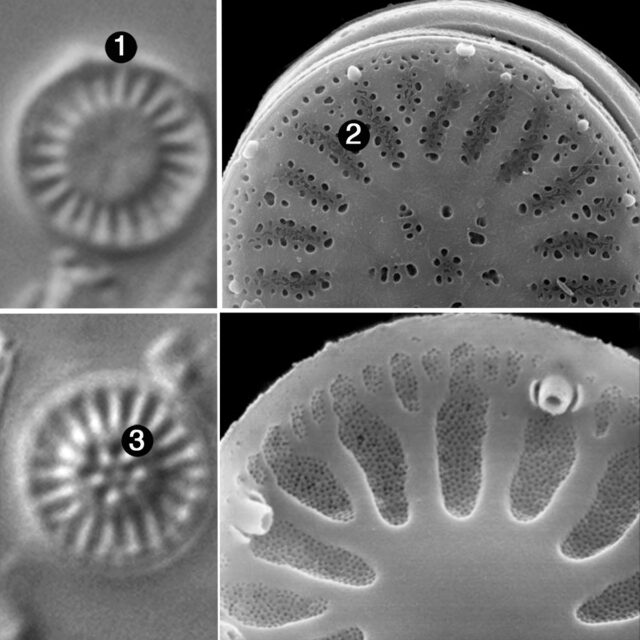
Discostella lakuskarluki
- Valves < 7 μm in diameter
- Striae cover 50-70% of valve radius
- Central rosette present, or absent
Cells are less than 7 μm in diameter. The striae on the valve face extend along 50–70% of the valve radius. A central rosette of alveoli is variable, as it may be present or absent. About half to one-third of all costae separating the alveoli bifurcate on the valve face. 3–5 marginal fultoportulae are present.
 Diatoms of North America
Diatoms of North America